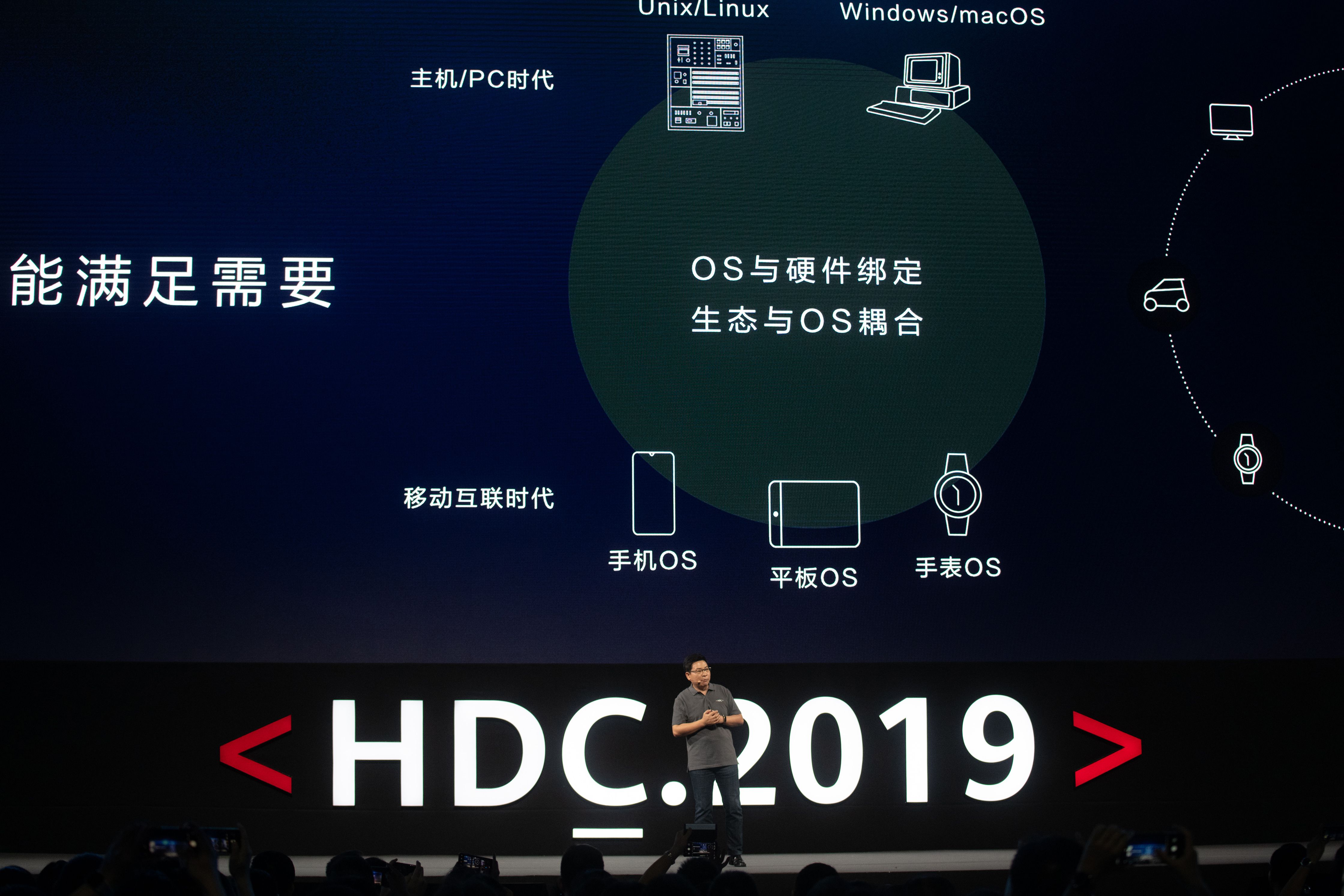After months of conflicting statements from Huawei executives, the Chinese networking giant on Friday officially unveiled HarmonyOS, the much-anticipated microkernel-based, distributed operating system that it has developed to power smartphones, laptops, and smart home devices as the company attempts to reduce its reliance on American firms.
HarmonyOS will be made available for deployment in smart screen products such as TV, smart watches, and in-vehicle infotainment systems later this year, said Richard Yu, CEO of the Huawei consumer division at company’s developer conference. In next three years, Huawei, the world’s second largest smartphone vendor, will look to bring HarmonyOS to more devices including smartphones, he said.
Yu claimed, without offering any actual proofs, that HarmonyOS is “more powerful and secure than Android.” “Can it be installed on smartphones? Of course.” The company claimed HarmonyOS’ microkernel has “one-thousandth the amount of code in the Linux kernel.”
“A modularized HarmonyOS can be nested to adapt flexibly to any device to create a seamless cross-device experience. Developed via the distributed capability kit, it builds the foundation of a shared developer ecosystem,” the company said in a statement, adding it began to explore developing its own operating system “as early as 10 years ago.”
The company said it intends to continue to use Android moving forward, but HarmonyOS is officially its back-up plan if things go south. “We will prioritize Android for smartphones, but if we can’t use Android, we will be able to install HarmonyOS quickly,” Yu said.

Image: FRED DUFOUR / AFP / Getty Images
The availability of the mobile operating system, which is open source, will be limited to China for now, though the company has plans to bring it to international markets at a later stage, he said.
The company said it has worked on security and trustworthiness aspects of the operating system from ground up. It said it uses formal verification methods to “reshape security.” Formal verification methods are an effective mathematical approach to validate system correctness from the source, while traditional verification methods, such as functional verification and attack simulation, “are confined to limited scenarios,” the company said.
The announcement today comes months after the U.S. government put Huawei and more than 60 affiliates in an entity list, restricting U.S. firms from conducting businesses with the Chinese giant. The U.S. government has accused Huawei of stealing trade secrets, and said it poses a risk to the nation security. Huawei has denied all these accusations and pursued legal means to fight back.
In the aftermath, Google, Intel, and other companies that contribute much of the technology and solutions that go into a smartphone suspended their business with Huawei, severely questioning the company’s future prospects.
The ongoing trade war between the U.S. and China has already started to impact Huawei’s bottom line. The company’s performance in the quarter that ended in June was weak.
What remains unclear is the impact U.S.’ accusations on Huawei has had on the Chinese company’s brand image worldwide. According to research firm Counterpoint, about half of all Huawei smartphones are shipped outside China.
Huawei was poised to become the world’s biggest vendor by shipment, something it would have achieved “if not for the trade war,” Yu said.
from RSSMix.com Mix ID 8176981 https://techcrunch.com/2019/08/09/harmonyos-huawei-release/
http://www.gadgetscompared.com
from Tumblr https://ikonografico.tumblr.com/post/186885701361
via http://www.gadgetscompared.com
No comments:
Post a Comment